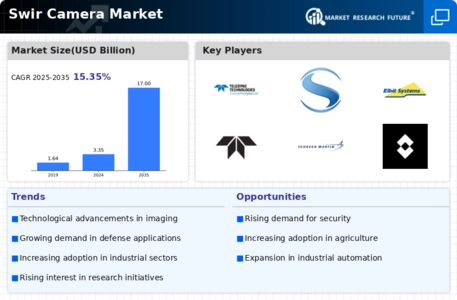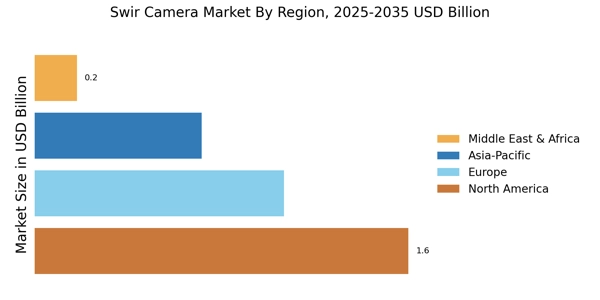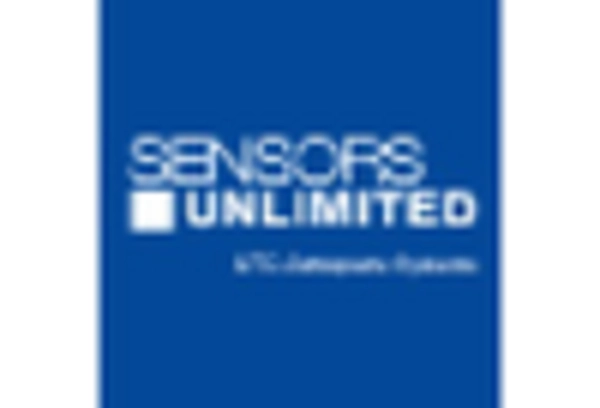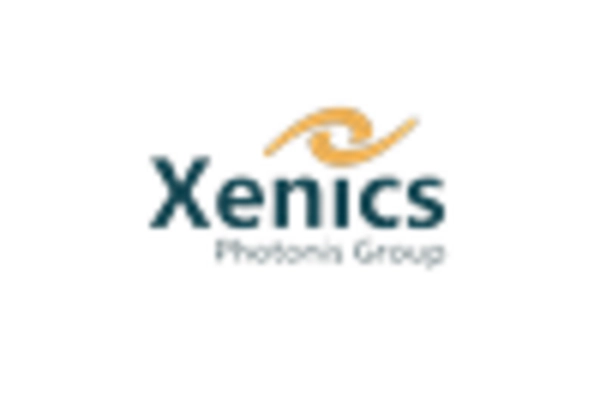The Swir Camera is currently characterized by a dynamic competitive landscape, driven by advancements in technology and increasing applications across various sectors, including defense, industrial, and scientific research. Key players such as FLIR Systems (US), Teledyne Technologies (US), and Lynred (FR) are strategically positioned to leverage their technological expertise and market presence. FLIR Systems (US) focuses on innovation in thermal imaging and sensing technologies, while Teledyne Technologies (US) emphasizes its broad portfolio of imaging solutions, including SWIR cameras, to cater to diverse customer needs. Lynred (FR), on the other hand, is concentrating on enhancing its product offerings through continuous R&D, thereby contributing to the competitive dynamics of the market.
The business tactics employed by these companies reflect a concerted effort to optimize operations and enhance market reach. Localizing manufacturing and optimizing supply chains are prevalent strategies aimed at reducing costs and improving responsiveness to market demands. The competitive structure of the SWIR camera market appears moderately fragmented, with several players vying for market share. However, the collective influence of major companies like FLIR Systems, Teledyne Technologies, and Lynred is significant, as they set industry standards and drive innovation.
In August 2025, FLIR Systems (US) announced the launch of its latest SWIR camera model, which integrates advanced AI capabilities for enhanced image processing. This strategic move is likely to position FLIR as a leader in the market, as AI integration is increasingly becoming a critical factor in imaging technology. The introduction of this model not only showcases FLIR's commitment to innovation but also addresses the growing demand for intelligent imaging solutions across various applications.
In September 2025, Teledyne Technologies (US) expanded its manufacturing capabilities by investing in a new facility dedicated to the production of SWIR cameras. This expansion is indicative of Teledyne's strategy to meet the rising demand for high-performance imaging solutions. By enhancing its production capacity, Teledyne is poised to strengthen its market position and respond more effectively to customer needs, thereby reinforcing its competitive edge.
In July 2025, Lynred (FR) entered into a strategic partnership with a leading aerospace company to develop specialized SWIR cameras for satellite applications. This collaboration is expected to enhance Lynred's technological capabilities and open new market opportunities in the aerospace sector. Such partnerships are crucial in the current landscape, as they enable companies to leverage complementary strengths and accelerate innovation.
As of October 2025, the SWIR camera market is witnessing trends that emphasize digitalization, sustainability, and the integration of AI technologies. Strategic alliances among key players are shaping the competitive landscape, fostering innovation and enhancing product offerings. Looking ahead, it is anticipated that competitive differentiation will increasingly hinge on technological advancements and supply chain reliability, rather than solely on price. Companies that prioritize innovation and adaptability are likely to thrive in this evolving market.


















Leave a Comment